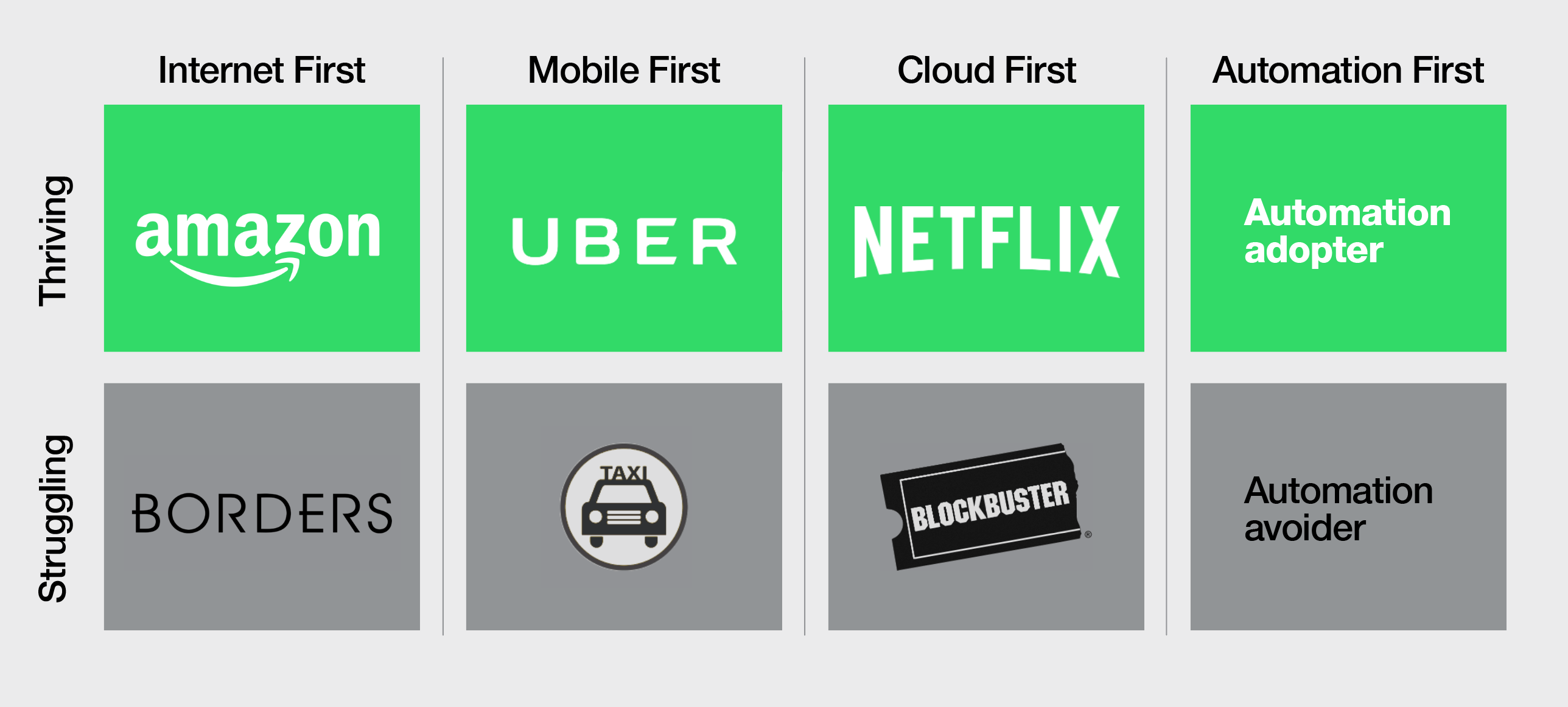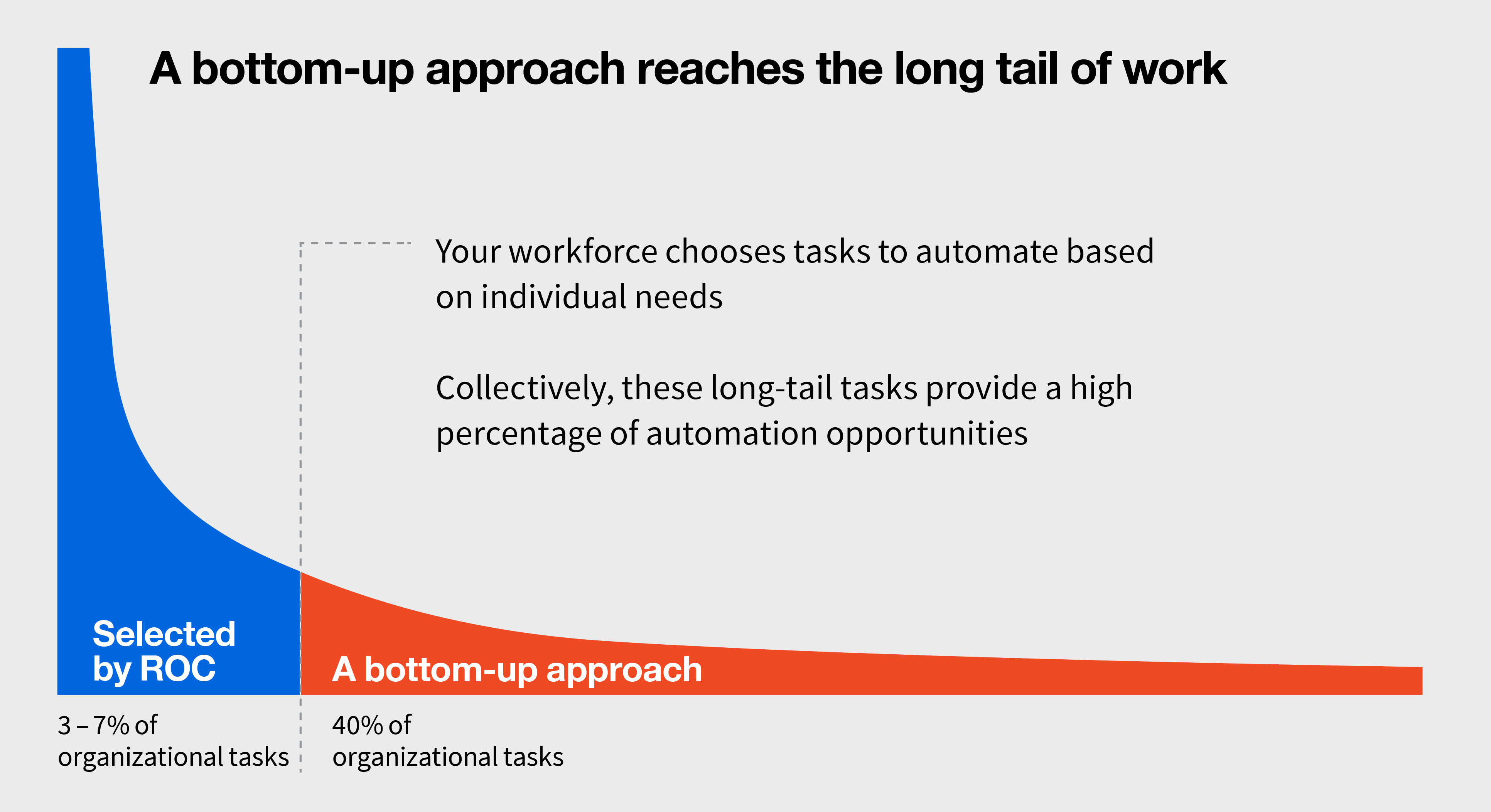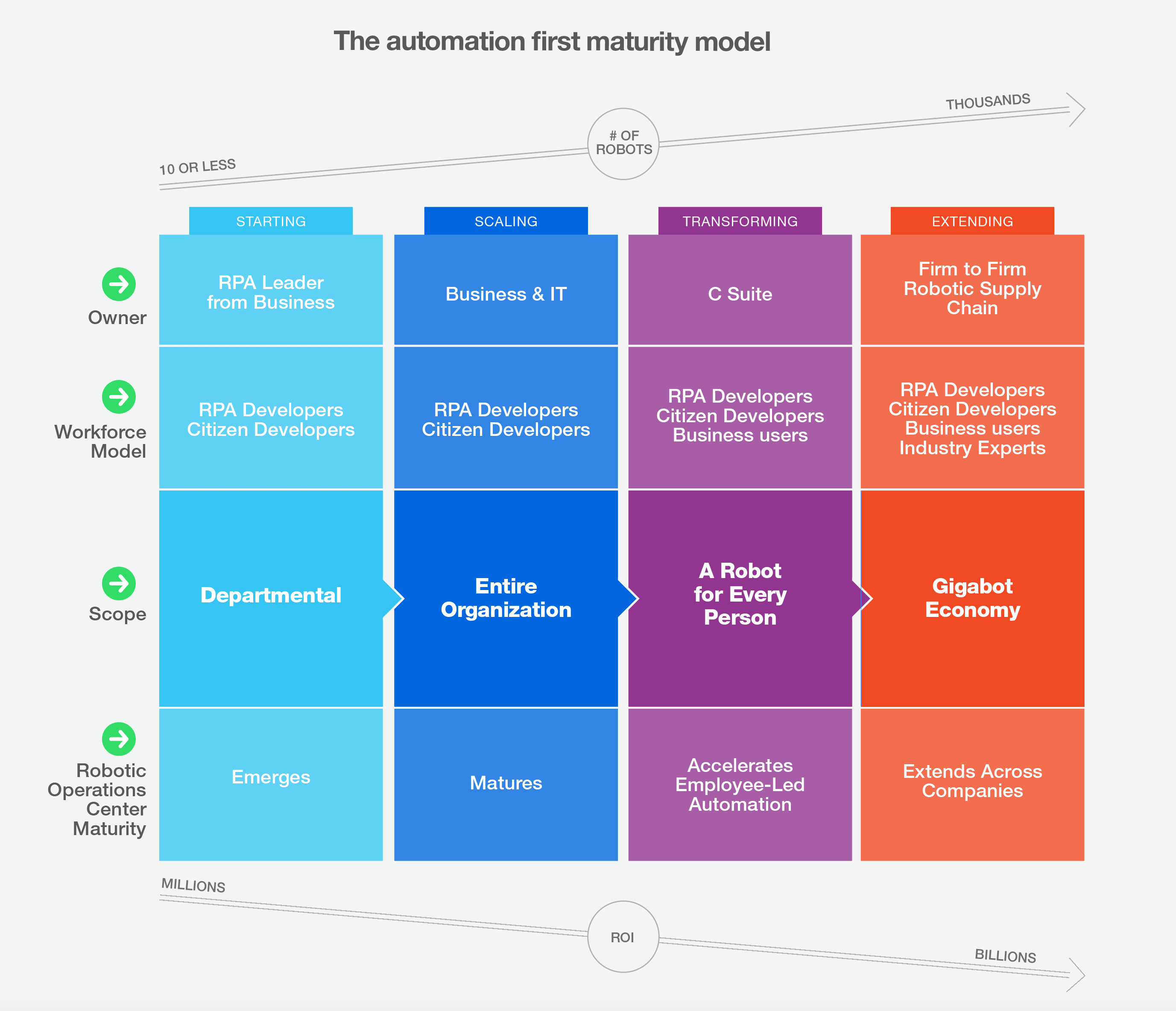Disruption is an inevitable result of technological innovation and advancement. As powerful new technology emerges—the internet, mobile platforms, the cloud, etc.—those organizations that fail to adapt and evolve inevitably fall by the wayside. Even industry giants are not immune to this phenomenon, and the history of business is littered with companies that failed to keep up with the pace of technological evolution and paid the price for it.
Conversely, companies that recognize the changing times, proactively incorporate disruptive technology and embrace new business models adequately prepare themselves for the future. Not only are they able to remain competitive—they often thrive. Take a look at the chart below for some examples of companies that struggled or thrived with the emergence of new disruptive technology.

Another technological shift is upon us: the ‘automation first’ era.
Coming over the horizon is a new wave of opportunity related to the use of robotics, machine learning, and AI. Companies that deploy automation technologies can realize substantial performance gains and take the lead in their industries, even as their efforts contribute to economy-level increases in productivity.
–McKinsey Global Institute
As businesses pursue digital transformation and incorporate more diverse platforms into their operational footprint, the sheer number of business processes and workflows to contend with can be overwhelming.
Extensive automation is essential to addressing the growing complexity that digital transformation produces, improving operational efficiency, reducing costs, and minimizing the strain that mundane, manual tasks place on your most valuable employees.
Robotic Process Automation (RPA) has emerged as the starting point for digital transformation. The technology can help you usher in a new era of efficiency, productivity, and prosperity for your business. This explains why RPA is growing so rapidly. Forrester estimates that the RPA market will reach 2.9 billion by 2021.
To make the most of this opportunity, your organization needs to adopt an automation first mindset from top to bottom. That is, seeking automation solutions first when designing, improving, or transforming a work process. If something can be automated, it should be automated.
Automation first embraces both a top-down and bottom-up approach
Instilling an automation first mindset, nurturing it, and encouraging adoption throughout your business can take time. There are two general paths toward this destination to consider.
The first is a top-down approach, which involves taking a centralized view of all of your business processes and identifying the processes that outnumber others in total volume, occur with the greatest frequency, have the greatest number of repetitive tasks, or require the most time to execute.
Domain heat maps, process mining, and planning tools can all help dedicated automation teams isolate the processes that are the best candidates for automation en masse.
Companies typically build this centralized team first, in the form of a robotic operations center (ROC). While the ROC tackles the processes that leave the biggest impact on your business, they also establish a governance model that allows your employees to explore which of their own day-to-day processes could be automated as a bottom-up approach. Individually, those tasks may seem to have a minimal effect on efficiency and cost-savings, but when taken as a whole, they represent a significant amount of time that employees across your organization spend on repetitive processes.
The following chart shows how the bottom-up approach compliments a more centralized top-down approach in terms of the percentage of organizational tasks each approach can touch.

Consider something as simple as copying-and-pasting information and data from one application into another. As an isolated incident, it’s an annoyance. Stretched out across hundreds or thousands of employees completing such tasks multiple times a day, it quickly becomes an enormous time-sink and operational cost.
Each approach has its merits and organizations should embrace both for the best results. While a centralized top-down approach tackles the repetitive tasks that the organization is aware of, the employee-led approach can reveal tasks and sub-tasks that can be automated to free up more time for employees. For a business to succeed at scaling automation, it needs to establish a mechanism for tackling processes from the top-down as well as supporting the employee-led approach.
How to scale automation
Once organizations have piloted RPA and demonstrated a clear proof of concept (POC), they are faced with the seemingly daunting prospect of scaling automation across the entire enterprise. In our experience, customers typically go through four stages as their automation program matures. These are starting, scaling, transforming and extending.
The diagram below outlines who owns each stage and what the operating model typically is.

There are a few considerations that need to be addressed in order to support seamless scalability and encourage user adoption. Security and governance, in particular, are two of the top concerns for RPA expansion. Who is in charge of building robots, vetting their performance, and approving them for widespread use?
Creating a ROC can help standardize automation policies and encourage adherence to RPA best practices. A ROC also centralizes the development and dissemination of robots, giving stakeholders full control over RPA expansion.
Building awareness throughout the organization by promoting POCs and showcasing the return on investment (ROI) of existing robots will cultivate organizational support, removing potential bureaucratic barriers to scalability.
Find the right RPA platform for your staff
Not all aspects of Robotic Process Automation will be driven by your IT workers. Enterprise organizations that have an automation first mindset encourage employees with no technical background to automate processes on their own.
The UiPath mission is to provide the platform for the automation first mindset, and the UiPath Enterprise RPA Platform has several components that encourage users who have no experience writing or executing code to build their own RPA Robots. UiPath Studio, for instance, provides an intuitive interface that non-technical audiences can easily navigate.
UiPath also supports a large crowdsourcing RPA Community that shares useful Robots with each other and can help answer questions. Organizations that wish to teach their workforce about the finer points of RPA development and deployment can take advantage of the UiPath Academy.
Whatever obstacles you encounter on your path to reaching an automation first mindset, the results are well worth it. By removing the burden of monotonous and time-consuming tasks, automation can improve employee productivity 75% and job satisfaction rates 50%.
The automation first era is here, and UiPath RPA can help you position your company to succeed and thrive in this exciting time of technological innovation and disruption.



